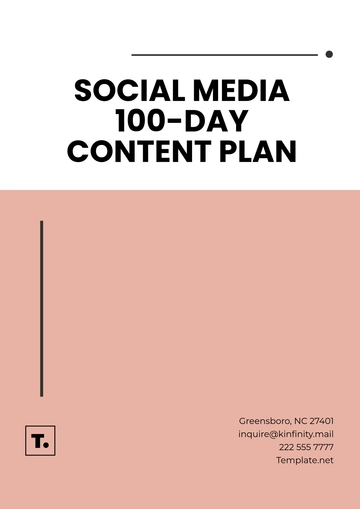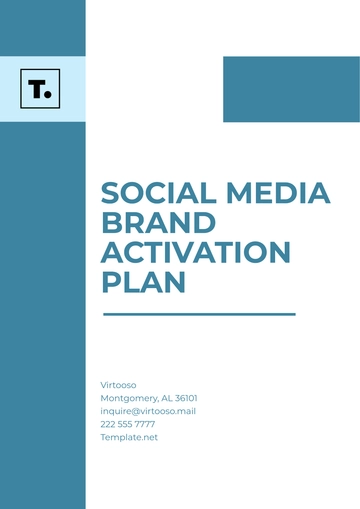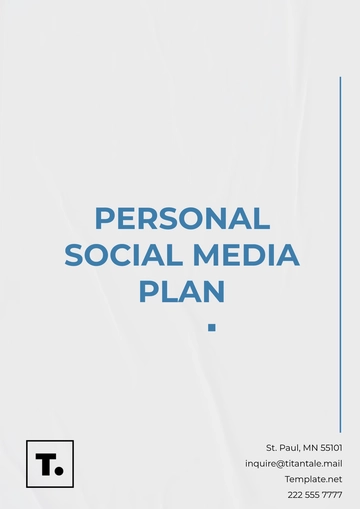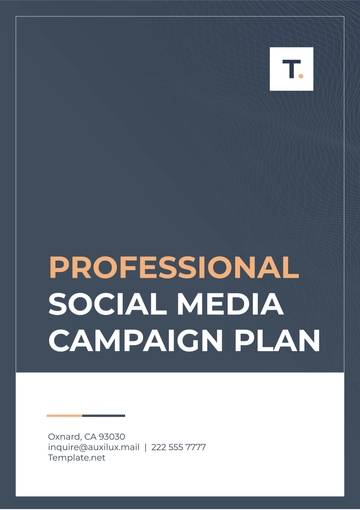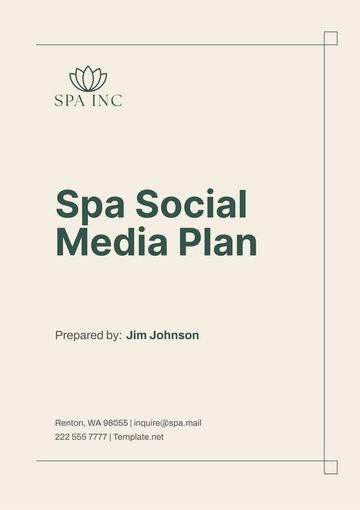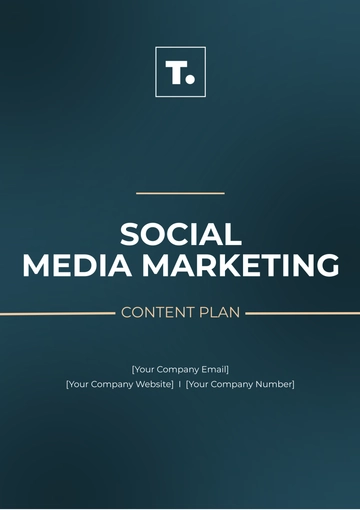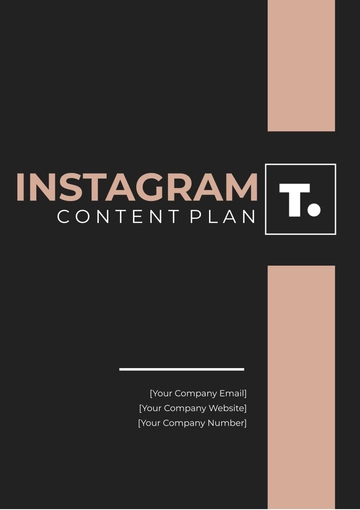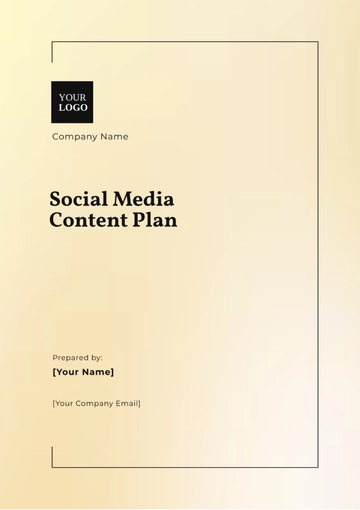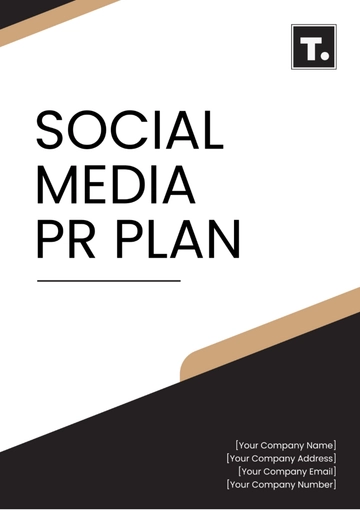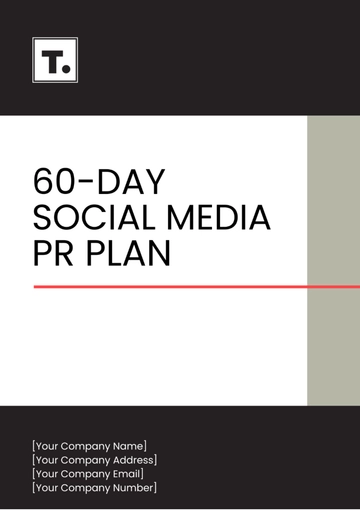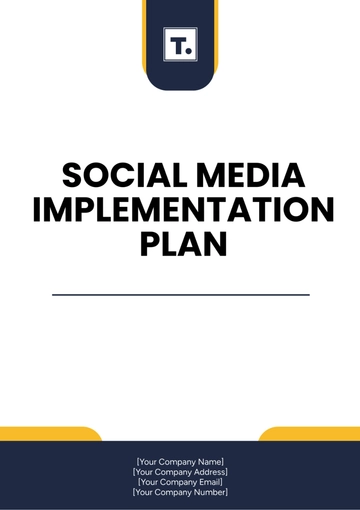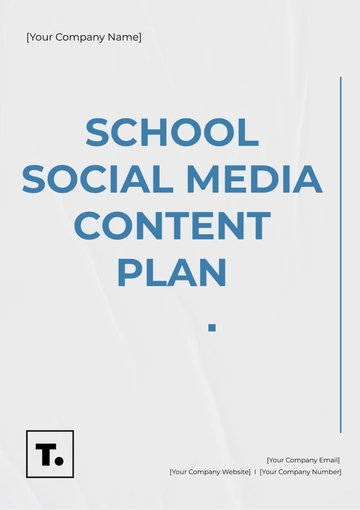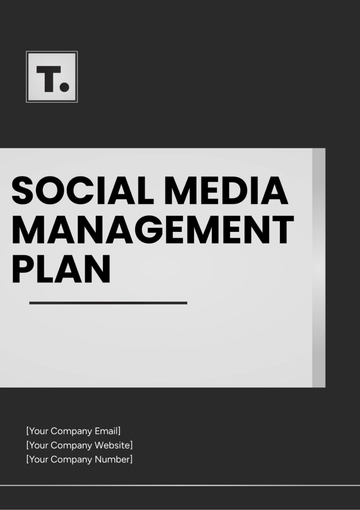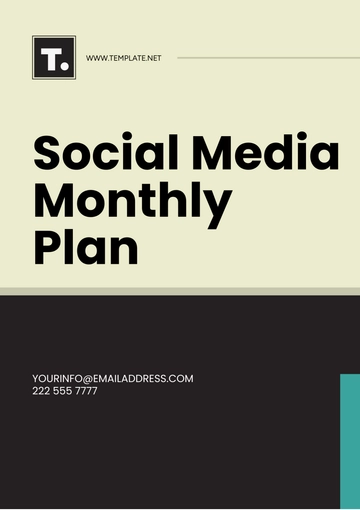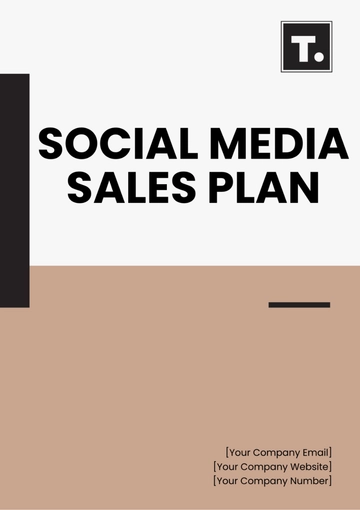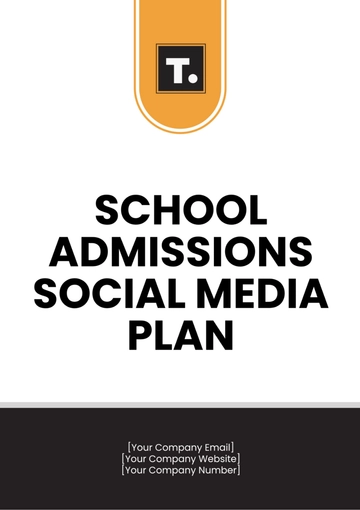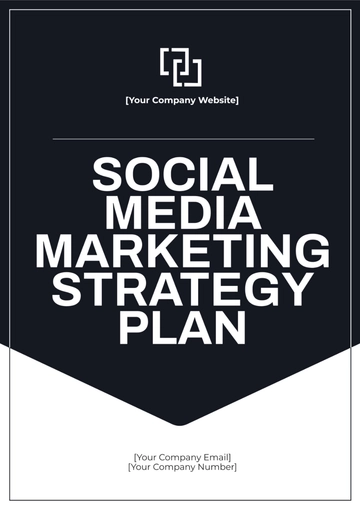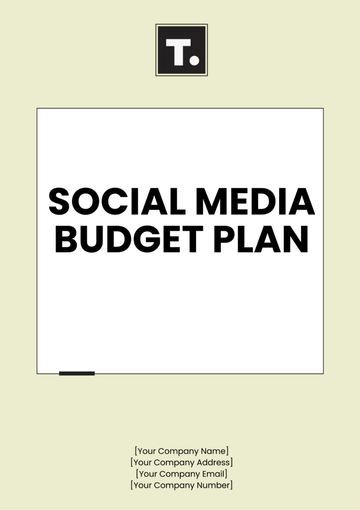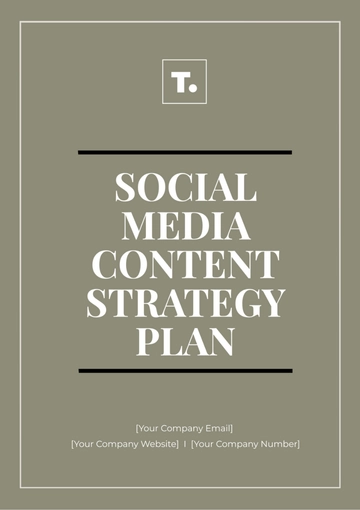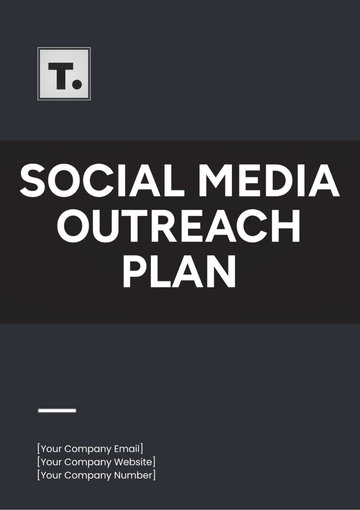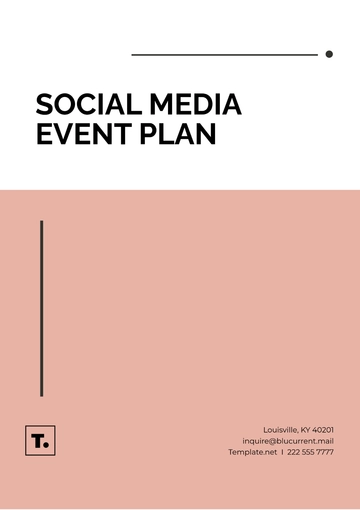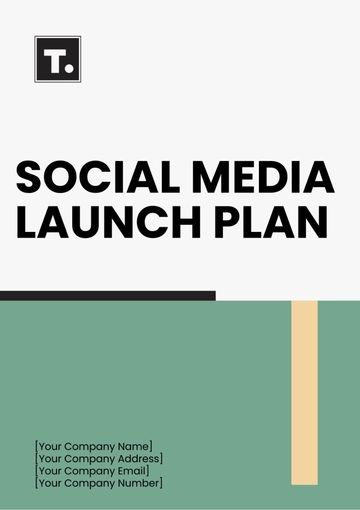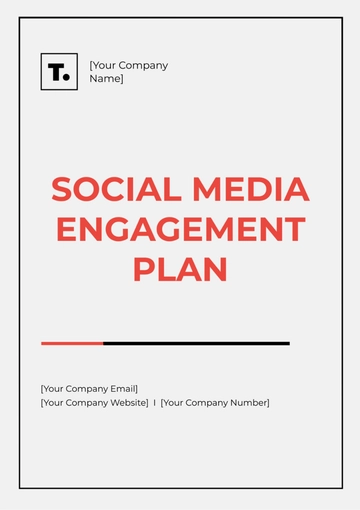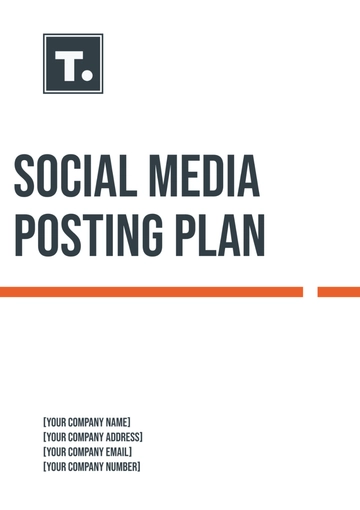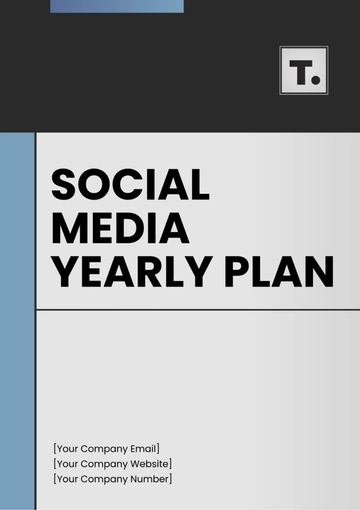Free Social Media Marketing Strategy Plan
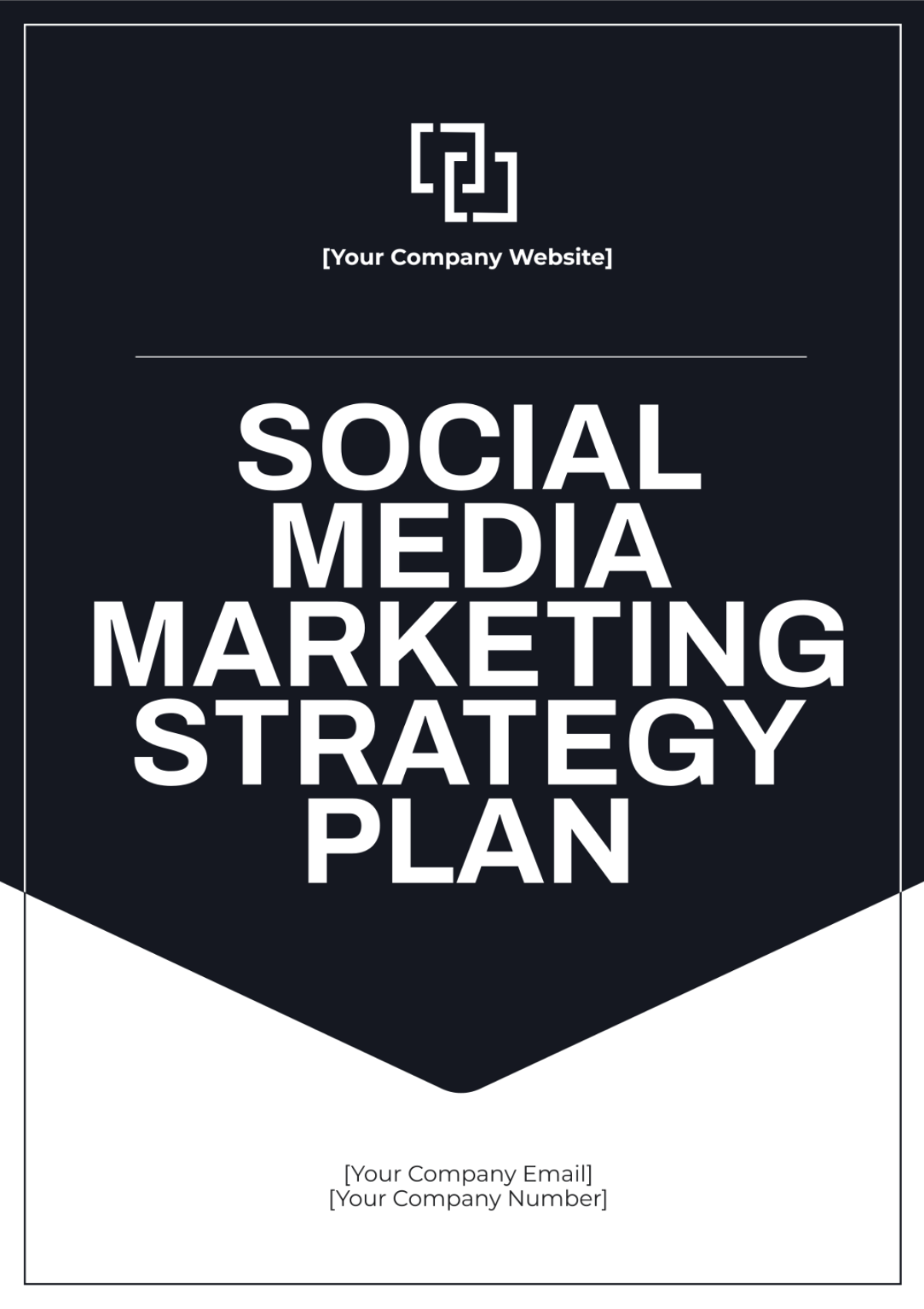
Company Name | [YOUR COMPANY NAME] |
|---|---|
Contact Person | [YOUR NAME] |
[YOUR EMAIL] | |
Phone Number | [YOUR COMPANY NUMBER] |
Address | [YOUR COMPANY ADDRESS] |
Website | [YOUR COMPANY WEBSITE] |
Social Media Profiles | [YOUR COMPANY SOCIAL MEDIA] |
I. Executive Summary
The Strategic Social Media Marketing Plan for [YOUR COMPANY NAME] aims to bolster existing customer relationships, address inquiries, and solicit feedback to enhance customer satisfaction. This plan delineates strategic goals, target audience insights, platform strategies, and performance metrics crucial for effective customer relationship management through social media.
II. Goals and Objectives
Enhance Customer Satisfaction: Increase overall customer satisfaction ratings by [X%] within [X months] through proactive engagement and support on social media.
Increase Customer Retention: Achieve a [X%] decrease in customer churn rate by offering timely assistance and valuable content on social media platforms.
Gather Customer Feedback: Obtain [X number] of customer feedback responses monthly through social media surveys and polls to pinpoint areas for improvement.
Resolve Customer Inquiries: Reduce response time to customer inquiries on social media channels to [X hours] or less, ensuring prompt and satisfactory resolutions.
III. Target Audience
Demographics
Age: Varied demographic ranging from [AGE RANGE].
Location: Customers located in [GEOGRAPHIC LOCATIONS].
Purchase History: Customers who have previously engaged with [YOUR COMPANY PRODUCTS/SERVICES].
Online Behaviours
Social Media Usage: Active users of platforms such as Facebook, Twitter, Instagram, and LinkedIn.
Communication Preferences: Prefer communicating with brands via social media for quick assistance and support.
Content Consumption Habits: Engage with informative and entertaining content related to [YOUR INDUSTRY OR PRODUCTS/SERVICES].
IV. Platform Strategy
Content Types: Engaging posts, customer testimonials, product/service updates, FAQ sessions.
Posting Frequency: [NUMBER] times per week.
Engagement Strategy: Prompt responses to inquiries and comments, sharing relevant articles and blog posts, showcasing user-generated content.
Content Types: Quick responses to inquiries, informative tweets, retweets of relevant industry news.
Posting Frequency: [NUMBER] times per day.
Engagement Strategy: Monitoring brand mentions and hashtags, participation in Twitter chats, real-time support.
Content Types: Visual storytelling, behind-the-scenes content, user-generated content.
Posting Frequency: [NUMBER] times per week.
Engagement Strategy: Encouraging user-generated content, hosting Instagram Live Q&A sessions, sharing customer success stories.
Content Types: Professional updates, thought leadership articles, job postings.
Posting Frequency: [NUMBER] times per week.
Engagement Strategy: Engaging in industry-related discussions, sharing customer success stories, participating in LinkedIn Groups.
V. Content Plan
Content Calendar:
Schedule aligned with customer service hours, product launches, promotions, and industry events.
Utilization of in-house resources and user-generated content for freshness and engagement.
Themes focusing on customer success stories, product highlights, tips, and industry news.
Engagement Tactics
Response Time: Aim to respond to inquiries and comments within [TIME FRAME].
Proactive Engagement: Monitoring channels for mentions and inquiries, initiating conversations, addressing concerns promptly.
Personalized Responses: Tailoring responses to specific needs, addressing customers by name.
VI. Content Strategy
A. Content Themes
Customer Stories: Highlighting success stories and testimonials.
Educational Content: Providing informative content related to the industry.
Behind-the-Scenes: Offering glimpses of the company's culture and processes.
Promotional Content: Promoting special offers and discounts.
User-Generated Content: Sharing customer experiences.
Industry News and Trends: Keeping the audience informed about the latest developments.
B. Content Calendar
Date | Platform | Post Type | Theme | Description/Notes |
|---|---|---|---|---|
[DATE] | [PLATFORM] | [POST TYPE] | [THEME] | [DESCRIPTION] |
[DATE] | [PLATFORM] | [POST TYPE] | [THEME] | [DESCRIPTION] |
[DATE] | [PLATFORM] | [POST TYPE] | [THEME] | [DESCRIPTION] |
VII. Measurement and Analytics
KPIs: Tracking metrics such as response time, customer satisfaction ratings, engagement rate, and sentiment analysis.
Tools: Utilizing social media management tools like [TOOL NAME].
Reporting: Generating regular reports to assess effectiveness and identify areas for improvement.
VIII. Budget and Resources
Budget Allocation: Allocating resources for tools, content creation, and training.
Human Resources: Assigning dedicated staff or a social media team.
IX. Conclusion
The Strategic Social Media Marketing Plan provides a comprehensive framework for [YOUR COMPANY NAME] to enhance customer relationship management through social media. By leveraging targeted strategies and engaging content, we aim to strengthen relationships, drive brand loyalty, and improve overall customer satisfaction.
- 100% Customizable, free editor
- Access 1 Million+ Templates, photo’s & graphics
- Download or share as a template
- Click and replace photos, graphics, text, backgrounds
- Resize, crop, AI write & more
- Access advanced editor
Unlock the potential of your brand with Template.net's Social Media Marketing Strategy Plan Template. Crafted for versatility, this editable and customizable tool empowers you to tailor strategies to your unique needs. Seamlessly edit in our AI Editor Tool to refine your approach and elevate your online presence effortlessly.
You may also like
- Finance Plan
- Construction Plan
- Sales Plan
- Development Plan
- Career Plan
- Budget Plan
- HR Plan
- Education Plan
- Transition Plan
- Work Plan
- Training Plan
- Communication Plan
- Operation Plan
- Health And Safety Plan
- Strategy Plan
- Professional Development Plan
- Advertising Plan
- Risk Management Plan
- Restaurant Plan
- School Plan
- Nursing Home Patient Care Plan
- Nursing Care Plan
- Plan Event
- Startup Plan
- Social Media Plan
- Staffing Plan
- Annual Plan
- Content Plan
- Payment Plan
- Implementation Plan
- Hotel Plan
- Workout Plan
- Accounting Plan
- Campaign Plan
- Essay Plan
- 30 60 90 Day Plan
- Research Plan
- Recruitment Plan
- 90 Day Plan
- Quarterly Plan
- Emergency Plan
- 5 Year Plan
- Gym Plan
- Personal Plan
- IT and Software Plan
- Treatment Plan
- Real Estate Plan
- Law Firm Plan
- Healthcare Plan
- Improvement Plan
- Media Plan
- 5 Year Business Plan
- Learning Plan
- Marketing Campaign Plan
- Travel Agency Plan
- Cleaning Services Plan
- Interior Design Plan
- Performance Plan
- PR Plan
- Birth Plan
- Life Plan
- SEO Plan
- Disaster Recovery Plan
- Continuity Plan
- Launch Plan
- Legal Plan
- Behavior Plan
- Performance Improvement Plan
- Salon Plan
- Security Plan
- Security Management Plan
- Employee Development Plan
- Quality Plan
- Service Improvement Plan
- Growth Plan
- Incident Response Plan
- Basketball Plan
- Emergency Action Plan
- Product Launch Plan
- Spa Plan
- Employee Training Plan
- Data Analysis Plan
- Employee Action Plan
- Territory Plan
- Audit Plan
- Classroom Plan
- Activity Plan
- Parenting Plan
- Care Plan
- Project Execution Plan
- Exercise Plan
- Internship Plan
- Software Development Plan
- Continuous Improvement Plan
- Leave Plan
- 90 Day Sales Plan
- Advertising Agency Plan
- Employee Transition Plan
- Smart Action Plan
- Workplace Safety Plan
- Behavior Change Plan
- Contingency Plan
- Continuity of Operations Plan
- Health Plan
- Quality Control Plan
- Self Plan
- Sports Development Plan
- Change Management Plan
- Ecommerce Plan
- Personal Financial Plan
- Process Improvement Plan
- 30-60-90 Day Sales Plan
- Crisis Management Plan
- Engagement Plan
- Execution Plan
- Pandemic Plan
- Quality Assurance Plan
- Service Continuity Plan
- Agile Project Plan
- Fundraising Plan
- Job Transition Plan
- Asset Maintenance Plan
- Maintenance Plan
- Software Test Plan
- Staff Training and Development Plan
- 3 Year Plan
- Brand Activation Plan
- Release Plan
- Resource Plan
- Risk Mitigation Plan
- Teacher Plan
- 30 60 90 Day Plan for New Manager
- Food Safety Plan
- Food Truck Plan
- Hiring Plan
- Quality Management Plan
- Wellness Plan
- Behavior Intervention Plan
- Bonus Plan
- Investment Plan
- Maternity Leave Plan
- Pandemic Response Plan
- Succession Planning
- Coaching Plan
- Configuration Management Plan
- Remote Work Plan
- Self Care Plan
- Teaching Plan
- 100-Day Plan
- HACCP Plan
- Student Plan
- Sustainability Plan
- 30 60 90 Day Plan for Interview
- Access Plan
- Site Specific Safety Plan
